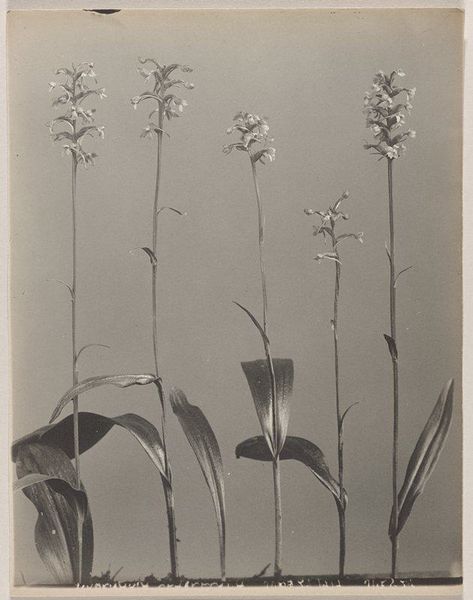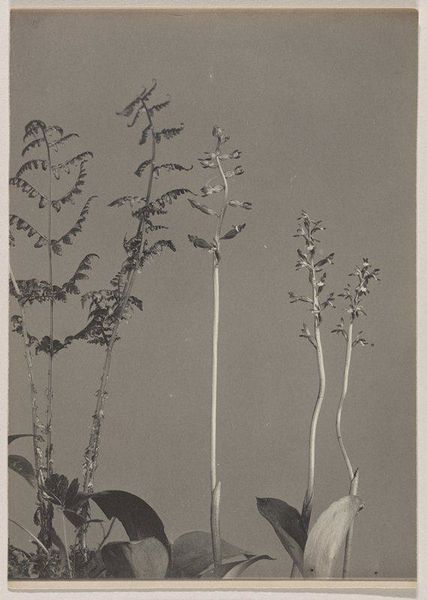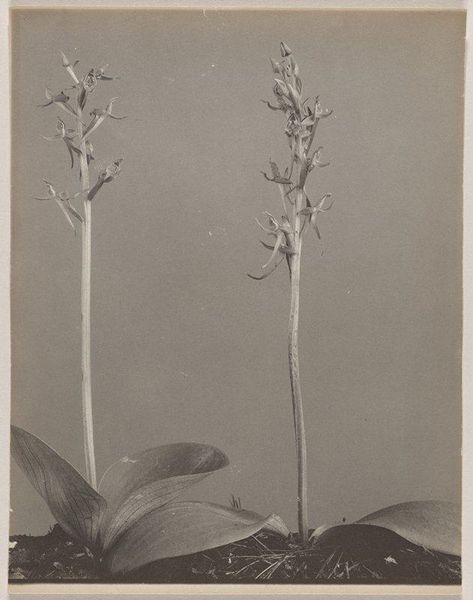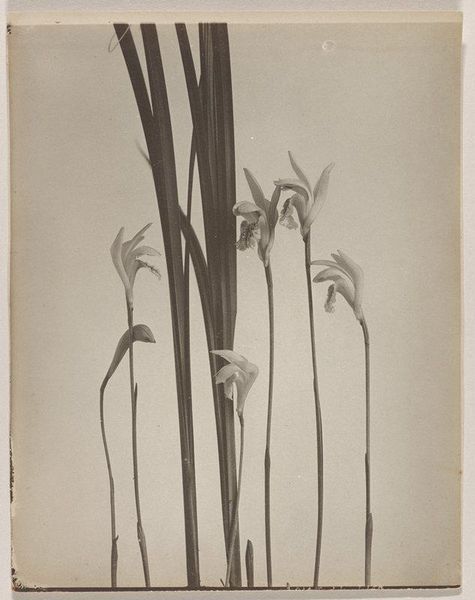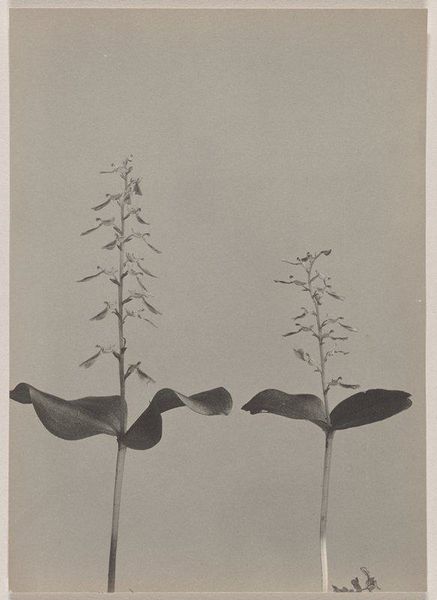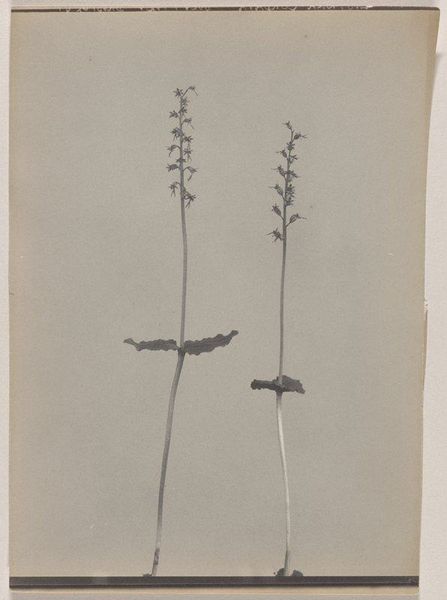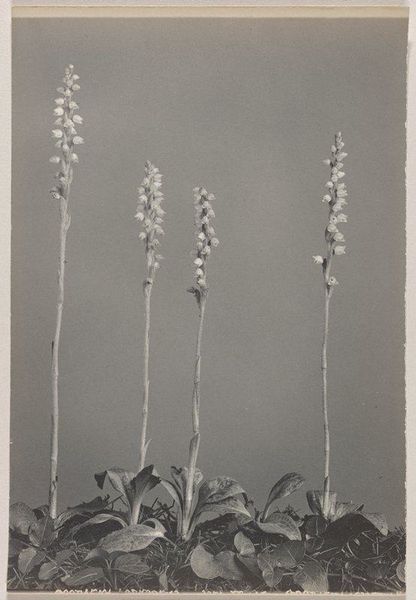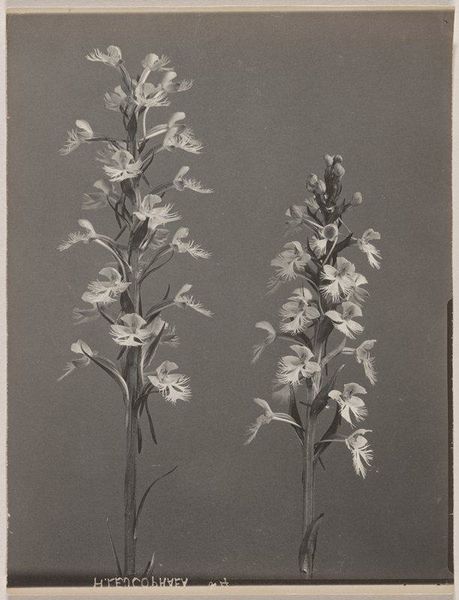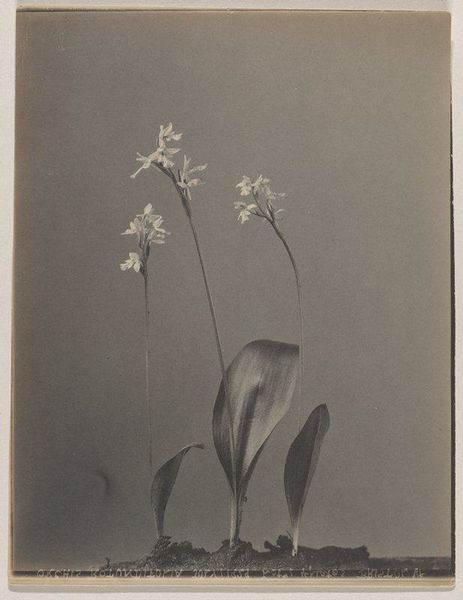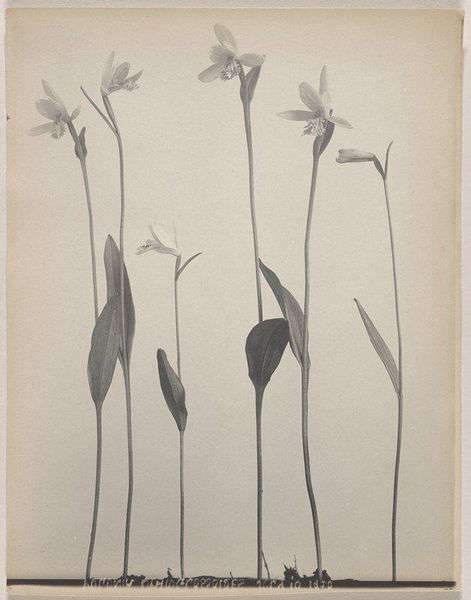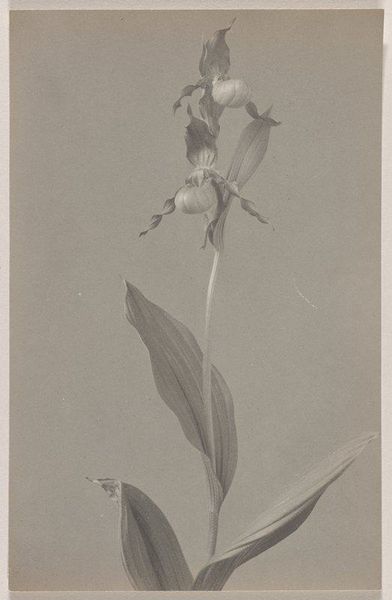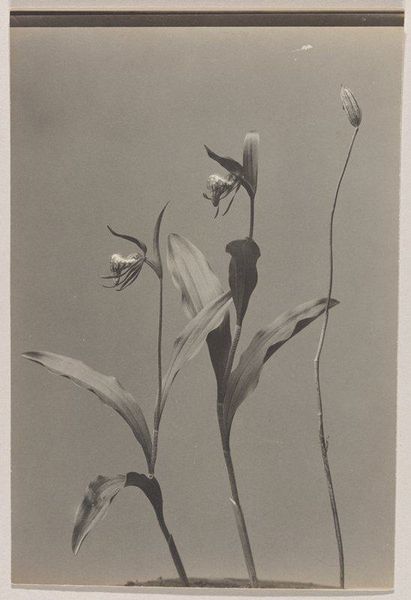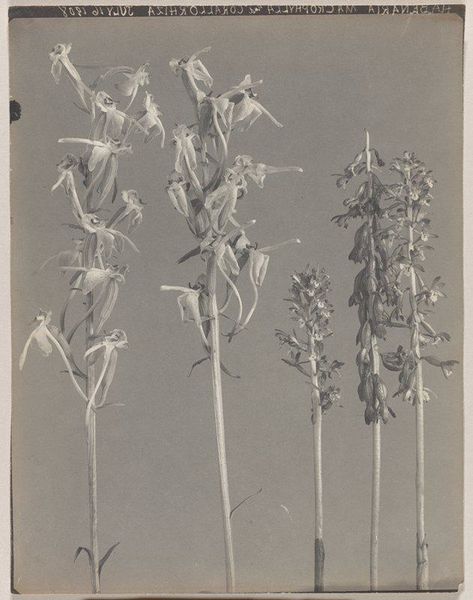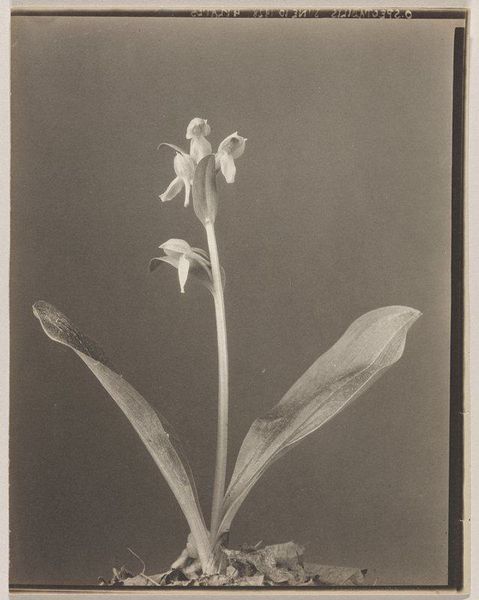
photography, gelatin-silver-print
#
still-life-photography
#
landscape
#
photography
#
gelatin-silver-print
#
united-states
#
watercolor
#
realism
Dimensions: 9 1/2 x 7 5/16 in. (24.13 x 18.57 cm) (image, sheet)
Copyright: No Copyright - United States
Curator: Edwin Hale Lincoln's 1931 gelatin silver print, “Malaxis unifolia- Green Adder's Mouth”, part of the Minneapolis Institute of Art's collection, captures these orchids in stunning detail. The silver gelatin printing process yields such rich and minute tonal gradations. Editor: My initial reaction is that there’s an almost haunted stillness. They appear delicate and watchful against the subdued light. What kind of conversation do you think Lincoln was trying to have with nature when he photographed these Green Adder’s Mouth orchids? Curator: Well, Lincoln was renowned for his detailed studies of plant life. He clearly appreciated the aesthetic qualities, focusing on texture, form and subtle variations in tone. To me, it reads as an attempt to truly *know* a subject through observation. Editor: I read this photograph as a poignant commentary on visibility and marginalization. Orchids, although celebrated for their beauty, exist within delicate ecosystems that are easily disrupted by colonialism and resource extraction. They exist outside of established modes of power. Considering Lincoln's perspective within the broader environmental degradation during the 1930s, these images take on a layered meaning. Curator: That's a beautiful way to see it. I think I tend to lean more into the quiet intimacy of these kinds of works, as I find that Lincoln really allows the orchid itself to express its innate…orchidness. But your read certainly enriches my understanding of it. Editor: Perhaps we can hold both understandings, respecting the artist's apparent intentions while recognizing the broader social, political, and environmental context that also permeates the artwork. The act of close observation can be an inherently political statement, particularly when directed toward overlooked and undervalued species. Curator: Right, seeing this makes me want to wander out and discover the hidden gardens of the world for myself. Editor: And me—to reflect upon what it means to notice the quiet revolutions unfolding in hidden ecosystems.
Comments
No comments
Be the first to comment and join the conversation on the ultimate creative platform.
